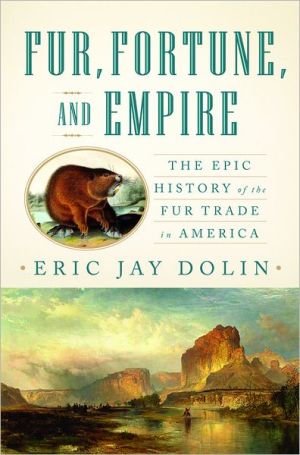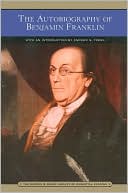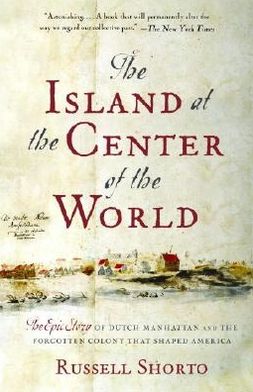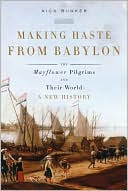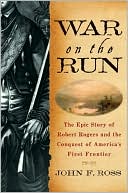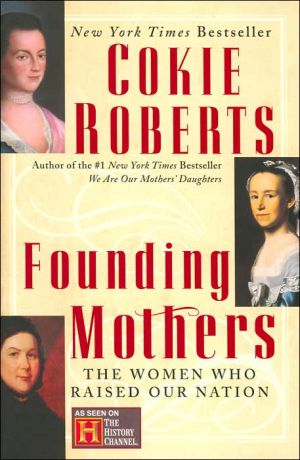Fur, Fortune, and Empire: The Epic History of the Fur Trade in America
A Seattle Times selection for one of Best Non-Fiction Books of 2010\ Winner of the New England Historial Association's 2010 James P. Hanlan Award Winner of the Outdoor Writers Association of America 2011 Excellence in Craft Award, Book Division, First Place\ "A compelling and well-annotated tale of greed, slaughter and geopolitics." —Los Angeles Times\ From the best-selling author of Leviathan comes this sweeping narrative of one of America's most historically rich industries.\ As Henry...
Search in google:
From the best-selling author of Leviathan comes this sweeping narrative of one of America’s most historically rich industries. The Barnes & Noble Review Historian Eric Jay Dolin brilliantly argues that the trade in animal skins turned colonial America into a tumultuous frontier where global powers battled for control. From the seventeenth century right on up to the Gilded Age, the developed world's appetite for fur and its unique qualities made the new continent, with its wealth of fur-bearing wildlife, a seemingly inexhaustible resource. The result, as laid out in Dolin's new book Fur, Fortune, and Empire: The Epic History of the Fur Trade in America, was a major boost in the evolution of the colonies into a powerful new player on the world stage. Modern-day Manhattan, for example, owes its existence to Dutch eagerness to establish dominance in the trade: New Amsterdam was first settled in the early seventeenth century as a fur trading post where they could exchange European metal goods for beaver pelts brought in by Native Americans. The Dutch wielded military power to oust rival Sweden from the colonial fur trade, yet the popularity of their wares proved their undoing. The intense competition from English colonies and from French fur traders came with its own armed backing, and the English Navy would ultimately oust the Dutch from New Amsterdam in 1664. Dolin sheds insight on the ways the fur trade created international tensions -- in New England, the Great Lakes, and in the expanding West. As traders clamored for access to land controlled by Native Americans, tribes were pushed off their lands, then given guns and liquor, wreaking havoc on their traditional lifestyles. The fur trade also triggered exploration more generally; fur traders were often the first white men to map major rivers, forests, and mountains. The trade and the broader economy that followed in its wake pulled people west, including Lewis and Clark and Kit Carson, culminating in the monopoly of the nineteenth-century fur trader, and celebrated philanthropist John Jacob Astor, whose American Fur Company would open up new trading posts across America (and whose fortune would endow the library that would become a national icon). For all of fur's contentious position in American culture today, Dolin has skillfully illuminated its centrality in our nation's ever-surprising history. --Chuck Leddy
Introduction xv\ Part I Furs Settle the New World\ 1 "As Fine a River as Can Be Found" 3\ 2 The Precious Beaver 13\ 3 New Amsterdam Rising 24\ 4 "The Bible and the Beaver" 37\ Part II Clash of Empires\ 5 Competition, Conflict, and Chicanery 61\ 6 "Many Hounds Are the Hare's Death" 74\ 7 Adieu to the French 94\ 8 Americans Oust the British 117\ Part III America Heads West\ 9 "A Perfect Golden Round of Profits" 133\ 10 Up the Missouri 166\ 11 Astoria 189\ 12 Mountain Men 223\ 13 Taos Trappers and Astor's Empire 255\ 14 Fall of the Beaver 279\ 15 The Last Robe 294\ Epilogue: End of an Era 310\ Notes 317\ Select Bibliography 409\ Acknowledgments 413\ Illustration Credits 417\ Index 421
\ Publishers WeeklyWho'd think you could write a history of the U.S. centered on three centuries of the trade in furs? Dolin has done so in this spirited tale, although you won't find presidents, treaties, and wars. Instead, the main characters are the Indians, Dutch, French, British, Russians, and Americans who sought wealth and a living in the pelts of fur-bearing animals--beavers especially, but also sea otters, fur seals, and buffalo. Beneath this absorbing story lies the relentless drive (a "lethal wave" in Dolin's words) across the continent. In Dolin's telling, westward expansion wasn't fueled by "manifest destiny" or the thirst for empire but by the chase after animals. People as varied as Peter Stuyvesant, John Jacob Astor, Kit Carson, and the roughhewn "mountain men" play their parts over lands as dispersed as New England and Oregon. By the time animals are driven to near-extinction in the late 19th century, the U.S. is filled in. Neither would have happened without the other. Dolin, author of the acclaimed Leviathan: The History of Whaling in America, offers another good history well told. 16 pages of color and 16 pages of b&w illus.; map. (July)\ \ \ \ \ Publishers WeeklyWho'd think you could write a history of the U.S. centered on three centuries of the trade in furs? Dolin has done so in this spirited tale, although you won't find presidents, treaties, and wars. Instead, the main characters are the Indians, Dutch, French, British, Russians, and Americans who sought wealth and a living in the pelts of fur-bearing animals--beavers especially, but also sea otters, fur seals, and buffalo. Beneath this absorbing story lies the relentless drive (a "lethal wave" in Dolin's words) across the continent. In Dolin's telling, westward expansion wasn't fueled by "manifest destiny" or the thirst for empire but by the chase after animals. People as varied as Peter Stuyvesant, John Jacob Astor, Kit Carson, and the roughhewn "mountain men" play their parts over lands as dispersed as New England and Oregon. By the time animals are driven to near-extinction in the late 19th century, the U.S. is filled in. Neither would have happened without the other. Dolin, author of the acclaimed Leviathan: The History of Whaling in America, offers another good history well told. 16 pages of color and 16 pages of b&w illus.; map. (July)\ \ \ Publishers WeeklyWho'd think you could write a history of the U.S. centered on three centuries of the trade in furs? Dolin has done so in this spirited tale, although you won't find presidents, treaties, and wars. Instead, the main characters are the Indians, Dutch, French, British, Russians, and Americans who sought wealth and a living in the pelts of fur-bearing animals--beavers especially, but also sea otters, fur seals, and buffalo. Beneath this absorbing story lies the relentless drive (a "lethal wave" in Dolin's words) across the continent. In Dolin's telling, westward expansion wasn't fueled by "manifest destiny" or the thirst for empire but by the chase after animals. People as varied as Peter Stuyvesant, John Jacob Astor, Kit Carson, and the roughhewn "mountain men" play their parts over lands as dispersed as New England and Oregon. By the time animals are driven to near-extinction in the late 19th century, the U.S. is filled in. Neither would have happened without the other. Dolin, author of the acclaimed Leviathan: The History of Whaling in America, offers another good history well told. 16 pages of color and 16 pages of b&w illus.; map. (July)\ \ \ \ \ Publishers WeeklyWho'd think you could write a history of the U.S. centered on three centuries of the trade in furs? Dolin has done so in this spirited tale, although you won't find presidents, treaties, and wars. Instead, the main characters are the Indians, Dutch, French, British, Russians, and Americans who sought wealth and a living in the pelts of fur-bearing animals--beavers especially, but also sea otters, fur seals, and buffalo. Beneath this absorbing story lies the relentless drive (a "lethal wave" in Dolin's words) across the continent. In Dolin's telling, westward expansion wasn't fueled by "manifest destiny" or the thirst for empire but by the chase after animals. People as varied as Peter Stuyvesant, John Jacob Astor, Kit Carson, and the roughhewn "mountain men" play their parts over lands as dispersed as New England and Oregon. By the time animals are driven to near-extinction in the late 19th century, the U.S. is filled in. Neither would have happened without the other. Dolin, author of the acclaimed Leviathan: The History of Whaling in America, offers another good history well told. 16 pages of color and 16 pages of b&w illus.; map. (July)\ \ \ \ \ Dallas Morning NewsDolin ranks among the historian elite. . . . It's impossible not to be drawn in by the cinematic sweep with which Dolin presents his story, with even the tiniest details accorded entertaining scrutiny. The nature of wampum, the teeth of beavers, the unfortunate introduction of guns and alcohol as barter items, the petty bickering between competing trading camps that all too often escalates into violence - there's wonder in every paragraph. Dolin clearly loves the material he's presenting, and he's excited to share it.— Jeff Guinn\ \ \ \ \ Christian Science Monitor[A] comprehensive, well-researched, and chronological account.... a compelling historical case study.\ \ \ \ \ Associated Press Staff[M]eticulous and fascinating.\ \ \ \ \ Audubon MagazineIn his previous book, Leviathan, Dolin traced the evolution of American whalers from shoreside hunters to global sailors, as each generation was forced to travel farther and farther from Nantucket to find whales. His latest saga follows a similar drain-the-resource arc: When trappers wiped out the beaver in one region, they simply pushed west and exhausted the next. But Fur, Fortune, and Empire is no melancholy affair. The book bursts with colorful characters, venal corporations, and violent confrontations, all presented with sharp-eyed clarity in a narrative that clips right along.— Bruce Barcott\ \ \ \ \ The OregonianThe great virtue of the book is in its sweep. . . . [Dolin's] ambition to tell the whole story of the American fur trade brings a depth of understanding to the economic driver the fur trade was that few other authors put forth. . . . Ultimately, Fur, Fortune, and Empire is at once a sad and thrilling tale of the inevitable destruction of resources and cultures in the name of social evolution.— Peter Sleeth\ \ \ \ \ Seattle TimesThis is the story of the skinning of a continent. . . . [Dolin] explains how the fur trade shaped the exploration, settlement and development of North America. . . . interesting, well-researched book.— Steve Raymond\ \ \ \ \ St. Louis Post-Dispatch[A] comprehensive study . . . One of the biggest services Dolin provides in Fur, Fortune, and Empire is giving the fur trade its proper due, establishing how important it was to the nation as a whole and to the gateway to the West in particular.— Dale Springer\ \ \ \ \ Wall Street JournalEric Jay Dolin—whose previous book, Leviathan: The History of Whaling in America, was a deft blend of history, business and zoology—has produced a superb one-volume examination of an era when American ingenuity and its competitive spirit began to flourish.... Dolin describes in marvelous detail...colorful figures of the American fur trades' western expansion.... at last, we now have a book that properly accounts for America's rise as a fur-trade power.— Michael Taube\ \ \ \ \ Los Angeles TimesThough guns, germs and steel certainly played their parts, Dolin's Fur, Fortune, and Empire leaves little doubt that the trade in pelts 'was a powerful force in shaping the course of American history from the early 1600s through the late 1800s, playing a major role in the settlement and evolution of the colonies, and in the growth of the United States.' Dolin puts forth a compelling and well-annotated tale of greed, slaughter and geopolitics as the Dutch, English, French, Spanish, Swedes, Russians and the American colonists fought for a slice of the profit.\ \ \ \ \ Boston GlobeEric Jay Dolin, author of Leviathan: The History of Whaling in America, now turns his keen eye on another fabled extractive enterprise in Fur, Fortune, and Empire: The Epic History of the Fur Trade in America. With impressive erudition and lively wit, Dolin charts the astonishing development and impact of this fashion-driven trade from its inception in the early 17th century to the late 1880s, by which time it had created legends and fortunes, fueled imperial expansion, irrevocably altered Native American existence and devastated entire species.— Anna Mundow\ \ \ \ \ BookPageBenjamin Franklin famously mused that the turkey might be a good symbol for the United States; we opted for the eagle instead. But a compelling case could be made for the beaver. In a sense, we owe the European settlement of the North American continent to that intrepid engineer of the animal world. . . . [Dolin] brings together all the exhilarating and tragic aspects of the [fur] trade through the 19th century . . . an absorbing and comprehensive ride through the trade's history.— Anne Bartlett\ \ \ \ \ Washington PostIn Fur, Fortune, and Empire, Eric Jay Dolin ranges far and wide over land and sea, searching for the beating heart of a gargantuan industry touched by almost every aspect of human society and human nature: war, power, money, faith, desire and ambition. . . . As in Leviathan, his highly praised book on U.S. whaling, he restores what most of us regard as an American institution to its rightful place on the international stage. The result is easily the finest tale of the trade in recent memory, a crisply written tale unburdened by excessive detail or homespun provincialism.— Kirk David Swinehart\ \ \ \ \ New WestA beaver might be a more fitting national symbol for America than a bald eagle, given the way the quest for that rodent's fur shaped this country's history, from its earliest colonial days to its Manifest Destiny westward drive and beyond. . . . Packed with intriguing tidbits . . . Fur, Fortune and Empire serves as a fur-focused refresher course on American history that will have readers reconsidering the powerful role the fur trade played in swaying in our nations history. The narrative of Fur, Fortune and Empire suggests that if you're proud to be an American, you can thank the beaver.— Jenny Shank\ \ \ \ \ The Internet Review of BooksAdventurers, charlatans, schemers, and activists abound . . . The true stories Dolin spins rival anything Hollywood has come up with on the topic. . . . entertaining and informative. . . . Fur, Fortune, and Empire gives what it promises. It is an illuminating analysis of how the beaver and its fur-bearing colleagues became the true 'founding fathers' of North America.— Dennis Rizzo\ \ \ \ \ Kirkus ReviewsThe fascinating story of the fur trade, full of heroism, greed, violence and political conflict. Historian Dolin (Leviathan: The History of Whaling in America, 2007, etc.) begins with a mild surprise: The pilgrims yearned for religious freedom but financed their voyage by agreeing to work for seven years to pay back, mostly in pelts, their English sponsors. "The Bible and the beaver were the two mainstays of the young colony," wrote historian James Truslow Adams in The Founding of New England. Later, as settlers moved west, they entered lands well explored by preceding trappers, and America's first multimillionaire, John Jacob Astor (1763-1848), made his fortune by sweeping up much of the fur trade from coast to coast. The first California rush was not for gold in 1848 but sea otters after 1800, quickly followed by fur seals. Although the American bison provided meat, it was the market for their coats that drove the massive slaughter. Dolin ends his riveting narrative with the last documented hunt for buffalo skins in 1887. While rising conservation movements stimulated the first legal limits on hunting, the author points out that their aim was to preserve the dwindling animals so that the fur trade could continue. Nevertheless, the laws worked, transforming America from a net exporter to an importer of furs. A delightful history, reminding readers that while noble ideals led to the settling of the United States, the fur trade paid the bills. Author tour to Boston, New York, Washington, D.C., St. Louis, Denver, Seattle, Portland, Ore. Regional tours in New England and the Midwest. Agent: Russell Galen/Scovil Chichak Galen Literary Agency\ \ \ \ \ Kirkus ReviewsThe fascinating story of the fur trade, full of heroism, greed, violence and political conflict. Historian Dolin (Leviathan: The History of Whaling in America, 2007, etc.) begins with a mild surprise: The pilgrims yearned for religious freedom but financed their voyage by agreeing to work for seven years to pay back, mostly in pelts, their English sponsors. "The Bible and the beaver were the two mainstays of the young colony," wrote historian James Truslow Adams in The Founding of New England. Later, as settlers moved west, they entered lands well explored by preceding trappers, and America's first multimillionaire, John Jacob Astor (1763-1848), made his fortune by sweeping up much of the fur trade from coast to coast. The first California rush was not for gold in 1848 but sea otters after 1800, quickly followed by fur seals. Although the American bison provided meat, it was the market for their coats that drove the massive slaughter. Dolin ends his riveting narrative with the last documented hunt for buffalo skins in 1887. While rising conservation movements stimulated the first legal limits on hunting, the author points out that their aim was to preserve the dwindling animals so that the fur trade could continue. Nevertheless, the laws worked, transforming America from a net exporter to an importer of furs. A delightful history, reminding readers that while noble ideals led to the settling of the United States, the fur trade paid the bills. Author tour to Boston, New York, Washington, D.C., St. Louis, Denver, Seattle, Portland, Ore. Regional tours in New England and the Midwest. Agent: Russell Galen/Scovil Chichak Galen Literary Agency\ \ \ \ \ Kirkus ReviewsThe fascinating story of the fur trade, full of heroism, greed, violence and political conflict. Historian Dolin (Leviathan: The History of Whaling in America, 2007, etc.) begins with a mild surprise: The pilgrims yearned for religious freedom but financed their voyage by agreeing to work for seven years to pay back, mostly in pelts, their English sponsors. "The Bible and the beaver were the two mainstays of the young colony," wrote historian James Truslow Adams in The Founding of New England. Later, as settlers moved west, they entered lands well explored by preceding trappers, and America's first multimillionaire, John Jacob Astor (1763-1848), made his fortune by sweeping up much of the fur trade from coast to coast. The first California rush was not for gold in 1848 but sea otters after 1800, quickly followed by fur seals. Although the American bison provided meat, it was the market for their coats that drove the massive slaughter. Dolin ends his riveting narrative with the last documented hunt for buffalo skins in 1887. While rising conservation movements stimulated the first legal limits on hunting, the author points out that their aim was to preserve the dwindling animals so that the fur trade could continue. Nevertheless, the laws worked, transforming America from a net exporter to an importer of furs. A delightful history, reminding readers that while noble ideals led to the settling of the United States, the fur trade paid the bills. Author tour to Boston, New York, Washington, D.C., St. Louis, Denver, Seattle, Portland, Ore. Regional tours in New England and the Midwest. Agent: Russell Galen/Scovil Chichak Galen Literary Agency\ \ \ \ \ Kirkus ReviewsThe fascinating story of the fur trade, full of heroism, greed, violence and political conflict. Historian Dolin (Leviathan: The History of Whaling in America, 2007, etc.) begins with a mild surprise: The pilgrims yearned for religious freedom but financed their voyage by agreeing to work for seven years to pay back, mostly in pelts, their English sponsors. "The Bible and the beaver were the two mainstays of the young colony," wrote historian James Truslow Adams in The Founding of New England. Later, as settlers moved west, they entered lands well explored by preceding trappers, and America's first multimillionaire, John Jacob Astor (1763-1848), made his fortune by sweeping up much of the fur trade from coast to coast. The first California rush was not for gold in 1848 but sea otters after 1800, quickly followed by fur seals. Although the American bison provided meat, it was the market for their coats that drove the massive slaughter. Dolin ends his riveting narrative with the last documented hunt for buffalo skins in 1887. While rising conservation movements stimulated the first legal limits on hunting, the author points out that their aim was to preserve the dwindling animals so that the fur trade could continue. Nevertheless, the laws worked, transforming America from a net exporter to an importer of furs. A delightful history, reminding readers that while noble ideals led to the settling of the United States, the fur trade paid the bills. Author tour to Boston, New York, Washington, D.C., St. Louis, Denver, Seattle, Portland, Ore. Regional tours in New England and the Midwest. Agent: Russell Galen/Scovil Chichak Galen Literary Agency\ \ \ \ \ Kirk Davis SwinehartAs in Leviathan, his highly praised book on U.S. whaling, [Dolin] restores what most of us regard as an American institution to its rightful place on the international stage. The result is easily the finest tale of the trade in recent memory, a crisply written tale unburdened by excessive detail or homespun provincialism.\ —The Washington Post\ \ \ \ \ The Barnes & Noble ReviewHistorian Eric Jay Dolin brilliantly argues that the trade in animal skins turned colonial America into a tumultuous frontier where global powers battled for control. From the seventeenth century right on up to the Gilded Age, the developed world's appetite for fur and its unique qualities made the new continent, with its wealth of fur-bearing wildlife, a seemingly inexhaustible resource. The result, as laid out in Dolin's new book Fur, Fortune, and Empire: The Epic History of the Fur Trade in America, was a major boost in the evolution of the colonies into a powerful new player on the world stage.\ Modern-day Manhattan, for example, owes its existence to Dutch eagerness to establish dominance in the trade: New Amsterdam was first settled in the early seventeenth century as a fur trading post where they could exchange European metal goods for beaver pelts brought in by Native Americans. The Dutch wielded military power to oust rival Sweden from the colonial fur trade, yet the popularity of their wares proved their undoing. The intense competition from English colonies and from French fur traders came with its own armed backing, and the English Navy would ultimately oust the Dutch from New Amsterdam in 1664.\ Dolin sheds insight on the ways the fur trade created international tensions -- in New England, the Great Lakes, and in the expanding West. As traders clamored for access to land controlled by Native Americans, tribes were pushed off their lands, then given guns and liquor, wreaking havoc on their traditional lifestyles. The fur trade also triggered exploration more generally; fur traders were often the first white men to map major rivers, forests, and mountains. The trade and the broader economy that followed in its wake pulled people west, including Lewis and Clark and Kit Carson, culminating in the monopoly of the nineteenth-century fur trader, and celebrated philanthropist John Jacob Astor, whose American Fur Company would open up new trading posts across America (and whose fortune would endow the library that would become a national icon). For all of fur's contentious position in American culture today, Dolin has skillfully illuminated its centrality in our nation's ever-surprising history.\ --Chuck Leddy\ \ \
